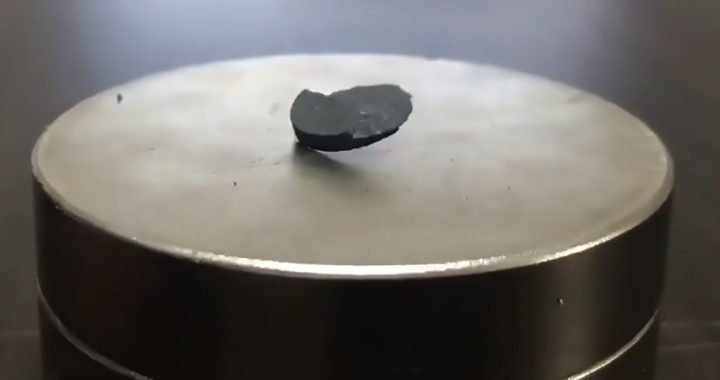A team of researchers from South Korea published in July 2023 two papers on the preprint server arXiv.org that presented what was supposed to be the first-ever room-temperature and ambient-pressure superconductor in the world. The material is called LK-99. The announcement drew excitement but also attracted skepticism from the scientific community and the general public. What exactly is LK-99? How is it made? What do other scientists say?
A Definitive Discussion About LK-99: Background and Studies
What is LK-99 and What are Room-Temperature Superconductors?
LK-99 is considered a potential room-temperature superconductor. Researchers Sukbae Lee, Ji-Hoon Kim, and Young-Won Kwon claimed that the material exhibited superconductivity at a temperature below 127 degrees Celsius and ambient pressure. This means that it maintains its superconducting state even under normal environments.
It is worth mentioning that the name of the material was derived from the initials of Lee and Kim and the year of its discovery. They discovered LK-99 in 1999 as a trace during one of their research undertakings. The pair worked on to explore the properties of this material. This included exploring its potential superconducting properties
Take note that superconductors are materials that have zero electrical resistance and repel magnetic fields. They specifically exhibit superconductivity when cooled below their respective critical temperatures. This fact impedes their widespread applications despite their apparent advantageous applications over normal conductors like copper.
Room-temperature superconductors are hypothetical materials that maintain their superconducting state even under normal environments. Remember that they remain hypothetical. Some researchers have claimed to produce one in the past. These studies and the supposed materials failed to pass scientific scrutiny.
Nevertheless, based on the claims of the researchers from South Korea, LK-99 might be a promising material but it still has to undergo further verifications through replication studies. Their papers were also not peer-reviewed prior to publication. The extraordinary nature of their claim warrants careful and closer investigation.
How Was the Material Made and What Is Its Chemical Composition?
LK-99 is a slightly modified lead-apatite. Take note that apatite is a group of phosphate minerals. The chemical composition of LK-99 is approximately Pb9Cu(PO4)6O while pure lead-apatite has a chemical composition of Pb10(PO4)6O. LK-99 was modified through the introduction of small amounts of copper in the apatite structure.
The team of Lee, Kim, and Kwon provided a method for the chemical synthesis of LK-99. The base materials are lanarkite and copper phosphate crystals. Lanarkite is produced by mixing equal amounts of lead monoxide powder and sulfuric acid lead salt powder and heating this mixture to a temperature of 725 degrees Celsius for 24 hours
Copper phosphate is produced by mixing copper powder and phosphate powder in a 3:1 molar ratio, placing the mixture in a sealed tube, and heating it to 550 degrees Celsius for 48 hours. Lanarkite and copper phosphate are then grounded into a powder, placed in a sealed vacuum tube, and heated to 925 degrees Celsius for a duration of 5 to 20 hours.
The heating of lanarkite and copper phosphate produced a chemical reaction that resulted in the production of a new material. This material is LK-99. Some sulfur gas was also released during the chemical reaction. Nevertheless, considering the entire process above, synthesizing or producing LK-99 can be done even in classroom science laboratories.
What is the Reaction of Scientists and How are the Claims Scrutinized?
Skepticism is the default response to proposed room-temperature superconductors. Material scientists and specific superconductor researchers have been skeptical about LK-99. Remember that extraordinary claims require extraordinary evidence. There were also errors and inconsistencies in the preprint papers of Lee, Kim, and Kwon.
There have been several non-peer-reviewed studies to explain the properties of LK-99. Irish scientist Sinéad M. Griffin published a paper explaining that the purported flat energy bands effect of the material depends on copper replacing lead atoms. Achieving this requires replacing very specific atoms. This makes synthesis with high purity difficult.
A preprint first-principles paper by researchers Junwei Lai et al. mentioned that it is possible that the conduction in the material is one-dimensional. This could explain why it does not act as a perfect magnetic levitator but rather a semi-levitator. The same paper explains that the material could perform better when doped with other metals like gold.
Other studies have focused on replication. The initial results are mixed. A group of researchers from Huazhong University of Science and Technology in China published a video showing the diamagnetism of small flakes of LK-99. Another group of researchers at the National Physical Laboratory of India noted that no diamagnetism was observed.
The Korean Society of Superconductivity and Cryogenics established a verification committee on 2 August 2023 as a response to the controversy and unverified claims of LK-99. The committee is headed by Kim Chang-Young of Seoul National University and consists of members from the same university and other universities.
FURTHER READINGS AND REFERENCES
- Griffin, S. M. 2023. “Origin of Correlated Isolated Flat Bands in Copper-Substituted Lead Phosphate Apatite (Version 1).” arXiv. DOI: 48550/ARXIV.2307.16892
- Kumar, K., Karn, N. K., and Awana, V. P. S. 2023. “Synthesis of Possible Room Temperature Superconductor LK-99.” arXiv. DOI: 48550/ARXIV.2307.16402
- Lai, J., Li, J., Liu, P., Sun, Y., and Chen, X.-Q. 2023. “First-Principles Study on the Electronic Structure of Pb10−xCux(PO4)6O (x=0, 1).” arXiv. DOI: 48550/ARXIV.2307.16040
- Lee, S., Kim, J.-H., and Kwon, Y.-W. 2023. “The First Room-Temperature Ambient-Pressure Superconductor (Version 1).” arXiv. DOI: 48550/ARXIV.2307.12008
- Lee, S., Kim, J.-H., and Kwon, Y.-W. 2023. Superconductor Pb10−xCux(PO4)6O Showing Levitation at Room Temperature and Atmospheric Pressure and Mechanism. arXiv. DOI: 48550/arXiv.2307.12037
